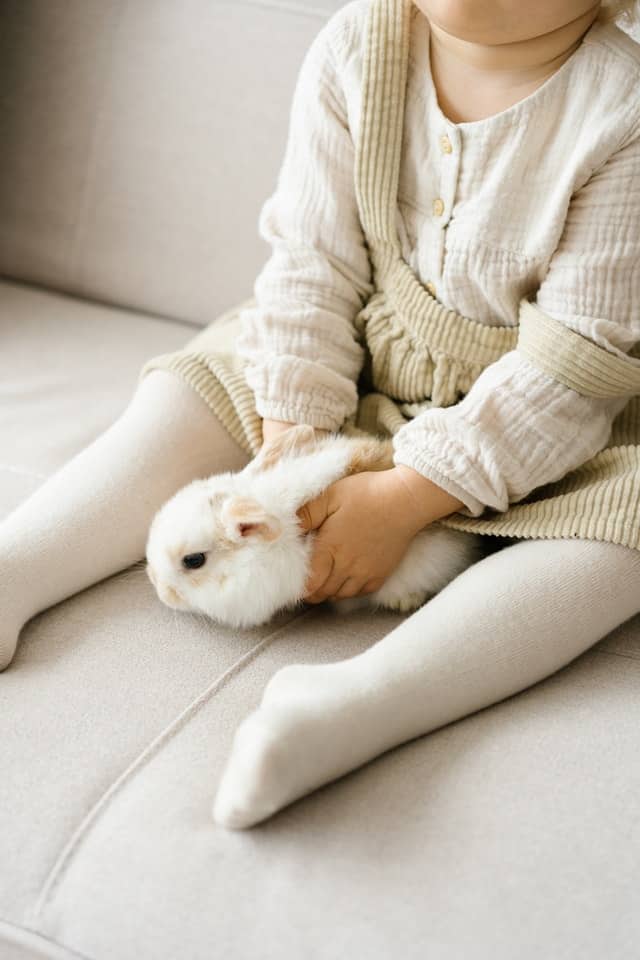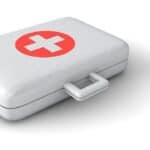
Have you decided to have a rabbit in your life? The first days of a rabbit at home are very important. Now you have a new member in the family and that is why at we want to help you find an ideal place for your new furry.
Have you fallen in love with a rabbit and couldn’t resist its charms? It does not surprise us. To us the same thing happened to us! To get to know our new pet a little more we have to think about how wild rabbits live: enjoying outdoor races and sniffing everywhere. Do you want to know a little more about them?
Dwarf rabbits are sociable and very intelligent animals, they are easily domesticated, always respecting an adaptation period. Over time they will come to respond to your name and are able to learn tricks in exchange for their favourite snacks. They will like spending time with you.
When we brought Tambor home, we prepared a small park for them, we believed that it was the right thing to do and that it would like it, although we soon realized that it was not the right thing to do.
The first days of your rabbit at home How should you take care of it?
Rabbits need to adjust to their new home, so it would be wise not to disturb them too much for 48 hours after they arrive.
Rabbits are very sensitive to stress so we recommend that the first week do not overwhelm them too much so that they can adapt to this new environment. It is important that you never run out of fresh water and hay.
Special care of a rabbit at home
Their life expectancy is usually between 5 and 8 years, although with a good diet and regular check-ups at the vet they can last a few more years. In order for them to live a full and happy life, it is necessary that you respect their adaptation periods and some basic care:
- Although they are pets that are perfectly adapted to living in a cage, we cannot keep them locked up all day. They must have their space to be able to play and exercise.
- You have to watch their diet a lot. It is one of the weak points of rabbits, that is why hay should never be lacking.
- Don’t yell at them! They learn much better if you treat them with affection, you will also prevent them from stressing.
- Brushing every day or every other day prevents the formation of hairballs in the stomach.
- They do not tolerate excessive cold or heat.
- The space for your cage or house should be located away from drafts and should have a container for hay, a waterer, a feeder , a place to shelter and a corner .
- Always have a first aid kit for rabbits.
- Watch the growth of their nails as well as their teeth, since both never stop growing.
- Keep his ears clean. Especially if your rabbit has floppy ears ( Belier Rabbit , Mini-lop …), since they are more prone to ear diseases.
- Do not bathe your rabbit and do not cut its hair.
How should the cage of a new rabbit at home be?
Your rabbit will spend a lot of time in the hutch that you enable, we are going to know everything it should have:
- Before preparing a hutch or cage for rabbits, we must be clear about the space we have, the size that our little one will have as an adult and the time that it will spend inside it. The appropriate area should be at least 0.3 m2 per rabbit. Regarding the height, it can be defined by what it measures when it stands on its two legs.
- It is important that it has good ventilation, away from drafts and where it does not get direct sunlight.
- Inside your house we must separate the sleeping, eating and toileting areas well so that you do not suffer from stress and maintain good hygiene. Your rabbit should have a litter tray, a feeder, and a drinker. We must also provide them with a small burrow so that it can take shelter in it as well as a play area with special objects to gnaw on.
- Wire floors should be avoided, because they tend to hurt the legs of rabbits. Cages of this type can be covered with artificial grass or cardboard.
Our new rabbit already has its cage at home. What add-ons do you need?
- The feeder: The feeder helps that food is not scattered throughout the house. It should be sturdy so you can’t gnaw it, easy to clean, and hard to tip over.
- Drinker: Our little one will always need drinking water at room temperature. There are two types of drinker (drip or open). Open drinking fountains are not very advisable, they can tip over and also the water inside would get dirty easily. Drip drinkers are ideal as they keep the water clean and do not allow it to spill.
- Henera: It will help us keep the hay cleaner and fresher.
- Shelter: for our rabbit to feel safe it has to have a house or shelter where it can get into and feel protected. If our rabbit does not have a home where it can feel safe, it can suffer anxiety or fall ill. There are wooden and plastic houses, although the wooden one is more recommended, since in addition to serving as a refuge you can also gnaw it.
- Toilet or corner tray: Ideally, place it in a corner. I recommend that it be made of plastic for an easier and more comfortable cleaning. Remember that rabbits are very intelligent animals that you can teach to relieve themselves in a certain place.
- Toys: They will provide entertainment for our bunny. From my point of view, wooden toys are ideal since they can gnaw on them keeping their teeth healthier.
How to clean a rabbit cage?
Think that, for these little lagomorphs, their cage is their kingdom, and we are responsible for its maintenance and cleaning. Regularity in this task will benefit both our rabbit and ourselves.
To carry out the cleaning of our bunny’s cage, we will need to provide ourselves with a suitable material.
- Scourer: A sponge used to wash dishes will do.
- Soap: You can use a common dish soap, without perfumes or antibacterial agents.
- Vinegar: It is the ideal product to help descale and eliminate stains, with the wine vinegar that we usually have at home it will be enough.
- Specific disinfectant: To combat bad odours caused by bacteria, choose one that also does not harm your animal and protects the environment.
In general, the following maintenance should be performed:
– Partial cleaning: every 1-2 days
– Deep cleaning: once a week
– Disinfection: once a month
How to maintain the hair of a rabbit?
Brush it whenever you can, if it has long hair do it with a long-toothed comb and give it malt to prevent hairballs from forming in its stomach. You will also have to monitor the growth of their nails and the cleaning of their ears.
What do rabbits eat?
You will need good quality hay, feed, and fresh food, all twice a day. As for fresh food, you can eat fruits and vegetables, but be careful! some can be harmful to your little one. Water should not be lacking at any time.
In general, we could divide the rabbit’s diet as follows:
- 70% -80% hay or fresh grass
- 20% fresh food (leafy vegetables or wild herbs)
- Complements: high-end feed and healthy “sweets” or fruits as a reward.
- Without forgetting the most important element of your diet: water.
What is the correct way to catch a rabbit?
Rabbits are not very fond of being picked up, especially if they are not feeling confident.
Rabbits have a very fragile skeleton. There are many cases of spinal injuries, dislocations and paralysis in rabbits due to poor handling practice or because they have been scared or fallen from a certain height. For this reason, it is of the utmost importance that we know how to lift a rabbit correctly.
The ideal way is to hold both the front and rear extremities.With one hand we will take it under its front legs and hold them with our fingers, with the other hand we will hold its butt supporting all the weight on our arm. Firmly but not too tight, he should notice that no part of his body is suspended, otherwise he will not feel safe and will try to escape.
What special care does a rabbit need to maintain its health?
- It is necessary to vaccinate once a year for myxomatosis and hemorrhagic fevers.
- If your rabbit has access to the outdoors, you have to prevent flea infestation with special products.
What should you keep in mind before adopting or buying a rabbit?
- Do not buy or adopt a rabbit less than one month old because it should be drinking breast milk.
- Look closely at the anus, it should not have traces of excrement stuck.
- Their eyes should not be watery, half open, or swollen.
- The nose should be dry and clean without mucus.
- Teeth without malformations or deviations. Make sure it eats perfectly.
- The coat must be clean without bald spots or scabs.
- Clean paws and nails without injury.
- Make sure its stools are normal and it has no diarrhea.
- Make sure they have a good character, neither too nervous nor too quiet.
We recommend that you do not buy your rabbit from a pet store. Preferably adopt or buy from an animal farm.
Have a rabbit at home with children
Rabbits are very calm and affectionate animals and that is why we will surely want to give them to our children or nephews. It is important that before acquiring one, you make sure that the children of the house can live with an animal of these characteristics, since they are very delicate animals that will need special care.
Do you have another pet at home? Will it get along with the new rabbit?
It is a difficult question to answer, as it really depends on the circumstances and the personality of both the rabbit and the other pet in question.
I would recommend not having a rabbit with a cat or a dog. If you already have other pets, you should make sure to keep them separate from your rabbit, at least in the beginning. If you really want to have the pets around, ideally the rabbit and the dog or cat should grow up together, so that they get used to each other. to the other from a very young age.
I hope these tips help you make your rabbit feel happy in its new home.






